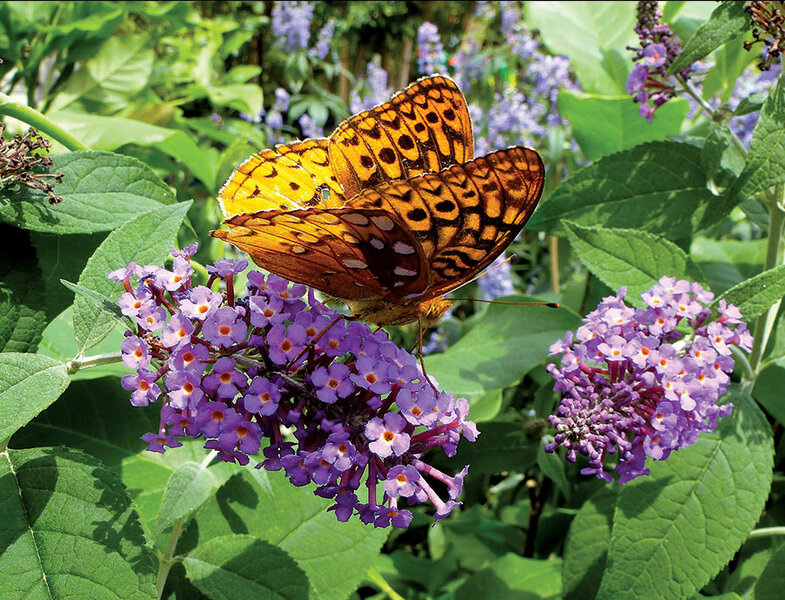Plant a snack bar for butterflies
Loading...
It’s true we have to deal with pests like Japanese beetles during the summer, but at the same time we also get butterflies.
It’s not a bad trade-off, especially when you consider that we also get to enjoy the spectacular plants that attract the bright little jewels, such as the graceful Buddleia.
Buddleia davidii is probably the most familiar and widely grown of the “butterfly bushes.” With its long arching branches and densely packed clusters of fragrant flowers, Buddleia is an excellent choice for a mixed border.
Impatient gardeners should note that butterfly bushes are late starters. The velvety gray-green leaves don’t appear until after most other shrubs have leafed out, and the parade of blooms may not start until midsummer. It is definitely worth the wait. In fact, once Buddleia gets going, it can grow as high as eight feet tall in one season and will bloom until frost. (Dwarf varieties are available for smaller gardens.)
Buddleia was named to honor an English clergyman, Adam Buddle, a 17th-century British cleric who studied and wrote about mosses and grasses. Father Armand David, a Roman Catholic missionary from France, was the first Westerner to discover the plant in the highlands of western and central China in the late 19th century. Seeds sent to Kew Gardens in England in 1896 eventually produced shrubs that became all the rage among Victorian British gardeners.
In its native land, Buddleia is known as summer lilac. Legends hold that thickets of the eye-catching shrub once provided shelter for wild leopards. But here, Buddleias are havens for butterflies. About 700 species of butterflies inhabit North America, though only 63 species are common. Sadly, continued loss of habitat and increasing use of pesticides appear to be pushing many butterflies to the brink of extinction.
Shrubs like Buddleia can provide not only food but also windscreens and places where butterflies can roost. Buddleia is by far the most popular butterfly snack bar. Butterflies prefer its nectar over that of any other plant.
Along with planting Buddleia, you can do a few other things to help butterflies thrive in your garden. For example, butterflies must warm their wings before they can fly, and they perform best when their body temperature is between 85 and 100 degrees F. Adding flat stones to a sunny area near the Buddleias will give them a place to land and bask in the sun.
And although you may often see butterflies at the birdbath, they prefer drinking from dirty puddles – something in the mud restores vital nutrients, researchers say. If you don’t want to let a mud puddle form in your garden, set out a shallow saucer filled with dirt and keep it wet.
The butterfly bush grows in Zones 5 through 10 and will do well in most any locale, from city to seaside. In areas where winters are severe, the shrub may die to the ground, but it will grow back from its roots in the spring. Buddleia prefers full sun and well-drained soil that has been enriched with peat moss or compost. When blooms start to fade, deadhead them to promote more flowering.
Keep an eye out for the Buddleia’s major pest problem, spider mites. Fertilize in August to encourage a fall display when the bloom spikes once again come alive with butterflies.
Note to readers:
Caution on butterfly bushes
When I wrote on the charms of Buddleia davidii, I did not realize it is now considered an invasive pest in several states, as was pointed out by alert readers. When I began growing it 20 years ago, it came highly recommended by reliable authorities.
New sterile varieties of the bush are now available. To be safe, ask a local native plant society or state department of natural resources about any plant you’re considering.
– Lynn Hunt







